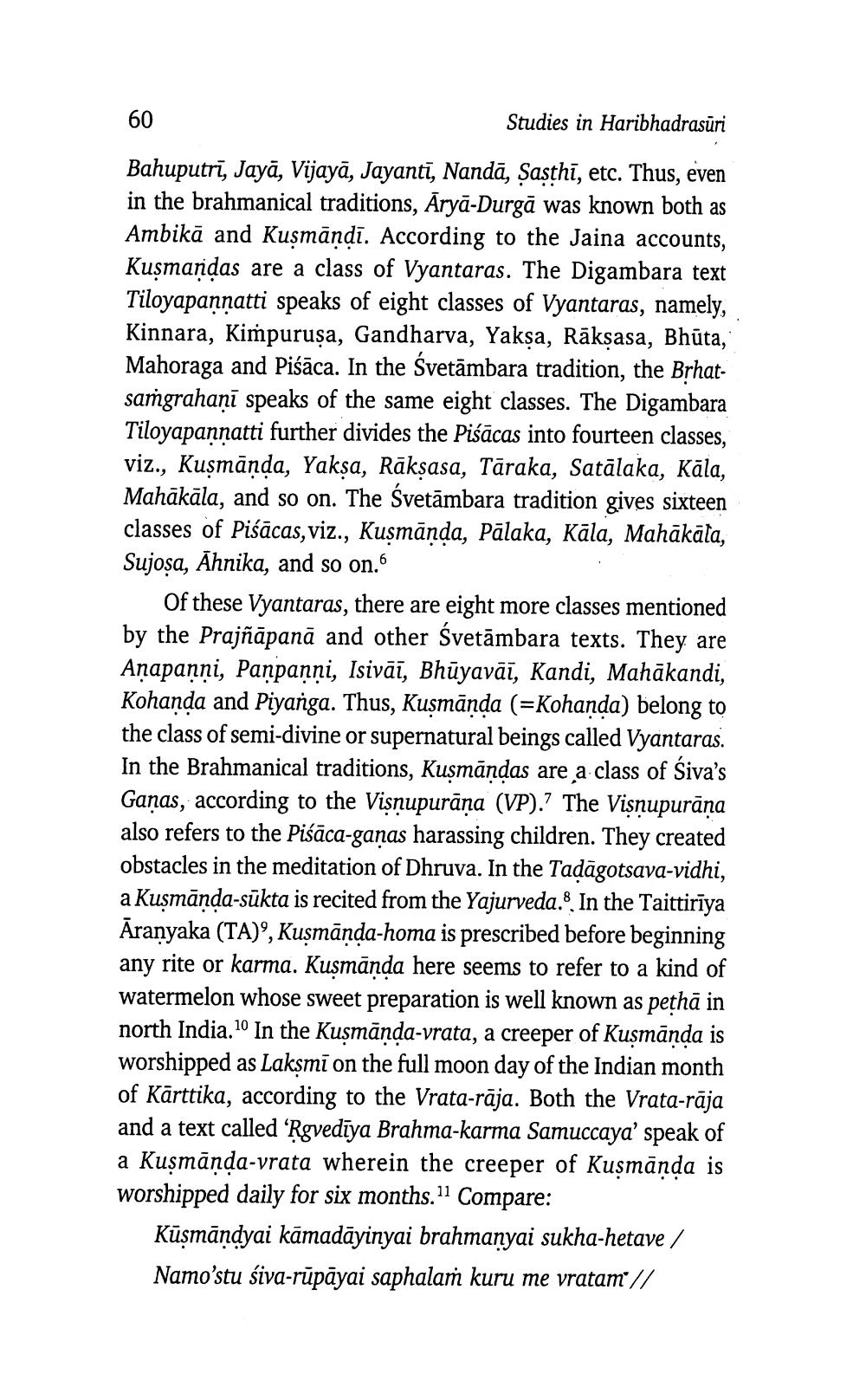________________
60
Studies in Haribhadrasuri
Bahuputrī, Jayā, Vijayā, Jayantī, Nandā, Şasthī, etc. Thus, even in the brahmanical traditions, Āryā-Durgā was known both as Ambikā and Kuşmāņdī. According to the Jaina accounts, Kuşmaņdas are a class of Vyantaras. The Digambara text Tiloyapannatti speaks of eight classes of Vyantaras, namely, Kinnara, Kimpuruṣa, Gandharva, Yaksa, Rākṣasa, Bhūta, Mahoraga and Piśāca. In the Śvetāmbara tradition, the Brhatsaņgrahaņī speaks of the same eight classes. The Digambara Tiloyapannatti further divides the Piśācas into fourteen classes, viz., Kuşmāņda, Yakşa, Rākşasa, Tāraka, Satālaka, Kāla, Mahākāla, and so on. The Svetāmbara tradition gives sixteen classes of Piśācas, viz., Kuşmānda, Pālaka, Kāla, Mahākāta, Sujosa, Āhnika, and so on.“
Of these Vyantaras, there are eight more classes mentioned by the Prajñāpanā and other Svetāmbara texts. They are Anapanni, Paņpanni, Isivāī, Bhūyavāī, Kandi, Mahākandi, Kohanda and Piyanga. Thus, Kuşmānda (=Kohanda) belong to the class of semi-divine or supernatural beings called Vyantaras. In the Brahmanical traditions, Kuşmāndas are a class of Siva's Ganas, according to the Visnupurāņa (VP).? The Visnupurāņa also refers to the Piśāca-ganas harassing children. They created obstacles in the meditation of Dhruva. In the Tadāgotsava-vidhi, a Kuşmānda-sūkta is recited from the Yajurveda.$. In the Taittirīya Āranyaka (TA)”, Kuşmānda-homa is prescribed before beginning any rite or karma. Kuşmāņda here seems to refer to a kind of watermelon whose sweet preparation is well known as pethā in north India.10 In the Kuşmāņda-vrata, a creeper of Kuşmānda is worshipped as Lakşmī on the full moon day of the Indian month of Kārttika, according to the Vrata-rāja. Both the Vrata-rāja and a text called 'Rgvedīya Brahma-karma Samuccaya' speak of a Kuşmāņda-vrata wherein the creeper of Kusmānda is worshipped daily for six months."1 Compare:
Kūşmāņdyai kāmadāyinyai brahmanyai sukha-hetave / Namo'stu śiva-rūpāyai saphalaṁ kuru me vratam //




